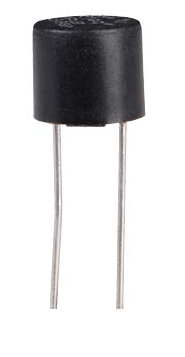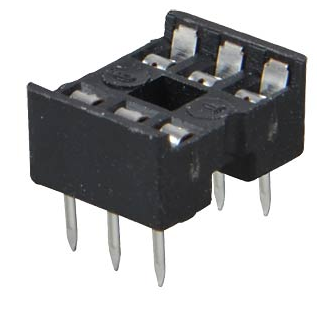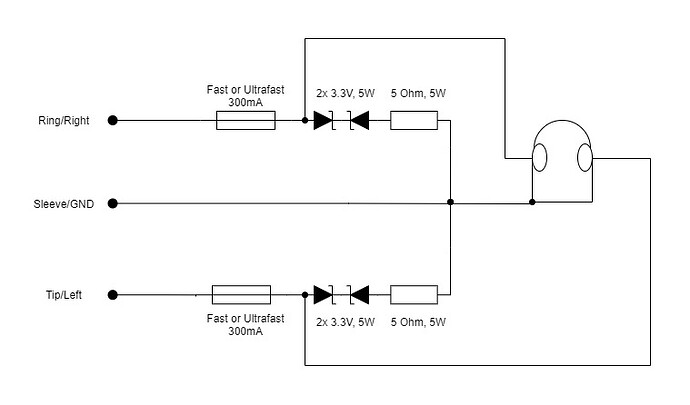The screw on ones tend to only work well with the thing they were intended to screw onto.
yeah. I think that is why.
It will do. The fuses just go and that is it.
With the votlages that thing uses, and depending on what comes out the headphone jack, maybe you need 20mA Fuses and 130V varistors.
Oh, huh, if it protects your amp too, then it’d be a good idea to implement, I mean, easier to replace a fuse than a transistor, then again the fuses are also surface mount, but I wonder if full sized fuses could work too? Idk, maybe they don’t blow fast enough.
Still an easier repair to replace those fuses and not risk a dead amp and blown headphones in any case.
Is there any detriment to having fuses in line with the signal (It seems to be in-line), I wouldn’t think so as long as the fuses are rated correctly for the amp in question, so they don’t blow too frequently, or so they don’t work too closely to their limit, but then again, idk in this case, maybe it would be good to have a sensitive fuse, since the damage can be pretty major.
Size (main concern) and I know SMD fuses exist for the low cut off current this application needs.
If there is a fuse, there is a holder for it.
Could also get a fuse like this:
and socket it in a standard IC socket:
Concerning the varistor and fuse choice: It depends on the output voltage high highest comfortable listening level. On a typical headphone amp, triggering at 4V (or 5.5V) or 300mA (up to 500mA, depending on headphone) is fine.
At these super-low voltages it may be better to use zener diodes back to back (because they act like a diode after all) to cap the voltage at 3.3V. and a 5 Ohm 5W resistor in series with the diodes.
If the Phonitor realy puts out 120V under normal conditions, then the fuse would have to trigger at 15mA and the varistor at 140V.
You know, I was thinking last night, I might build myself a SS like I am with my tube amp, if I get a refund on the Phonitor that is. I mean, with $1200 I can probably do quite a lot DIY wise.
True I’ll be using a pre-existing design instead for the SS since I know almost nothing about SS application, so I was thinking of a Beta 22, 4 boards for fully differential performance, and a separate power supply per board, idk seems like I’ll learn more building a B22, as well as get some great sound from what I’ve heard, and since I’ll be working off of a schematic, I can refer to the design at any time, and figure out how it works too.
The soldering isn’t really going to be an issue, since everything on the board seems to be Through-Hole.
Idk, anyone here have experience with a Fully Differential B22 sound wise? I haven’t heard of any issues with shorts, so idk, but it’ll seem fun to build.
The board seems easy to solder on, no Surface Mount Stuff, and everything seems pretty beefy, so it’s more of learning what each component does in the circuit rather than guessing as with the Phonitor.
Also I think the power supply boards mentioned they can function with a different range of Voltages, so that’ll be fun to test, idk if performance would go up with higher voltages though, but cool either way.
Well either that or implement the further range of upgrades on my Tube Amp, 800 bucks in upgrades, but why not, the parts are good and hopefully will last a long time. That way I can take my amp from Mk I to Mk II asap.
Oh also, in conjunction with the B22, if I can figure out how it’s power supply works, maybe further upgrade my tube amp by applying some SS into the PSU, so many possibilities.



